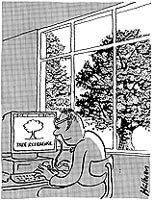A poor shelf-image
Graphic design books have been getting more space on bookstore shelves of late but some titles lack imagination and look as if they have been thrown together.

Been into an art and design book shop recently? Incredible. Graphic design books used to be shoved in a quiet corner between Ceramics and Quilt-making. Now they’re not only given some of the largest and most profitable areas in-store, they’re even spilling out into publishing’s most sacred altars – the till area and the shop window.
The contemporary classics are still much in evidence. Thank goodness there’s always space for the likes of Alan Fletcher’s auto-graphical Beware Wet Paint, and – the Morecambe and Wise of design books – A Smile in the Mind by David Stuart/ Beryl McAlhone, and Graphic Wit by Steven Heller. There’s an increasing number of Continental imprint titles, too, with Verlag Lars Muller particularly deserving of shelf space.
But the explosion in design books isn’t so much to do with these lovingly crafted items, more the huge number of what might be termed graphic compilations. The Greatest 12-inch Remix Sleeves of All Time: Two; Now That’s What I Call Typography 37; Flash Herberts: The Work of 25 East London-based Web Designers; more and more appear each week.
Some marry inspiration and intelligence, repaying the reader’s investment of time and money. Others read like they were dreamt up over a Pret A Manger lunch and produced in half that time. I suppose it’s no different from the music compilation albums in the 1980s. On the one hand you had The Best of Factory Records, on the other Jive Bunny Plays Shakin’ Stevens. (For the benefit of younger readers, these were audio recordings reproduced on vinyl – a primitive equivalent of an MP3).
What does this growth in graphic compilations tell us? It tells us that there’s a spectacular desire to capture and organise what’s being done out in studioland, and that this desire goes way beyond simply having a record of the “best ofs” – the “quite goods” are in demand, too.
What we can also see is that a significant number of designers still value the experience of browsing for such titles in a book shop. Rumours of the death of specialist retailers at the hands of some Amazonian Behemoth have been much exaggerated. I love buying books on-line, but I’ll always grab half an hour in a bricks and mortar shop when I can, even if the likes of Zwemmers and Dillons have yet to make a book shop experience all it could be. Of course, the real irony is that the rise of the Internet has probably increased the design book shops’ profits – just look at the number of titles about Web design on the shelves.
I think that the growth of graphic compilations also draws our attention to the industry’s increasing narcissism. Cruelly denied a place before the finest mirror society has – TV – graphic design has turned to the printed form for a mimetic celebration of its value and vitality. While advertising has always revelled in its mass market exposure, graphic design gets televised every other leap year. As a result, the book shop shelves bend beneath a collective need to absorb our own importance. I have written for or have had pieces included in a number of annuals, so I’m not above such navel-gazing.
Should we be worried by any of this? Some of the templated, production-line tat of these compilations would make a temporally-transported Gutenberg wish he had invented an innovative form of clog. But when money’s involved people make their own choices. The market can and will decide for itself.
For this reason, my concern is less about the quality of what’s on offer and more about how designers use such books. It seems that too often the first response to a new brief is to grab an annual and see what everyone else has done. Sure, you can learn from what’s gone before, but those first few hours of responding to a brief are when fresh and beautifully lateral ideas can emerge.
But there is a wider malaise here. Lazy grazing through graphic compilations is just an extension of an anaemic desktop culture where everything needed to perform a job function is just a click away. The Net is great for a million things, but where are you more likely to develop an exciting idea – sitting in front of your Mac or wandering round a museum or a park or a bar?
We are in danger of spending too much time immersed in what has already been done, rather than exploring what could happen next. Unless desktop, compilation culture is balanced with a healthy respect for the richness and fertility of life outside the studio, graphic design may end up sitting in a room full of mirrors, staring at itself.
-
Post a comment



